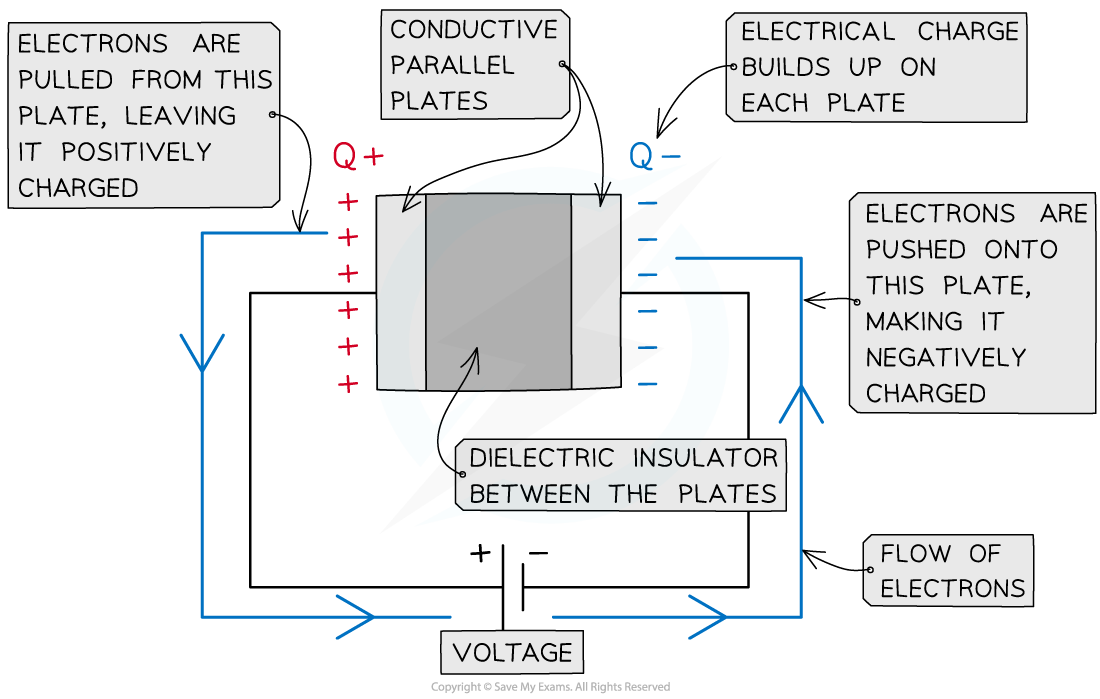Electron Flow in Charging & Discharging (OCR A Level Physics): Revision Note
Exam code: H556
Electron Flow in Charging & Discharging
Charging
Capacitors are charged by a power supply (e.g., a battery)
One plate of the capacitor is connected to the positive terminal of the power supply
The positive terminal 'pulls' electrons from this plate
Hence the plate nearest the positive terminal becomes positively charged
These electrons travel around the circuit and are pushed from the negative terminal of the power supply
The negative terminal 'pushes' electrons onto the other plate
Hence the plate nearest the negative terminal becomes negatively charged
As the negative charge builds up, fewer electrons are pushed onto the plate due to electrostatic repulsion from the electrons already on the plate
When no more electrons can be pushed onto the negative plate, the charging stops

Electron flow for a charging capacitor. Electrons are pulled from one plate and pushed on to the other
At the start of charging, the current is large and gradually falls to zero as the electrons stop flowing through the circuit
The current decreases exponentially
This means the rate at which the current decreases is inversely proportional to the amount of charge on the plate
Since an equal but opposite charge builds up on each plate, the potential difference across the plates slowly increases until it is the same as that of the power supply
Similarly, the charge of the plates slowly increases until it is at its maximum charge defined by the capacitance of the capacitor
Discharging
Capacitors are discharged through a resistor with no power supply present
The electrons now flow back from the negative plate to the positive plate until there are equal numbers on each plate and no potential difference between them
Charging and discharging is commonly achieved by moving a switch that connects the capacitor between a power supply and a resistor

The capacitor charges when connected to terminal P and discharges when connected to terminal Q
At the start of discharge, the current is large (but in the opposite direction to when it was charging) and gradually falls to zero
As a capacitor discharges, the current, p.d and charge all decrease exponentially
This means the rate at which the current, p.d or charge decreases is proportional to the amount of current, p.d or charge it has left
The graphs of the variation with time of current, p.d and charge are all identical and follow a pattern of exponential decay
Examiner Tips and Tricks
Describing the motion of electrons (electron flow) for a charging or discharging capacitor is a common exam question. Ensure you are able to specify from which plate electrons are 'pulled' (the plate connected to the positive terminal of the power supply) and to which plate electrons are 'pushed' (the plate connected to the negative terminal).

Unlock more, it's free!
Did this page help you?